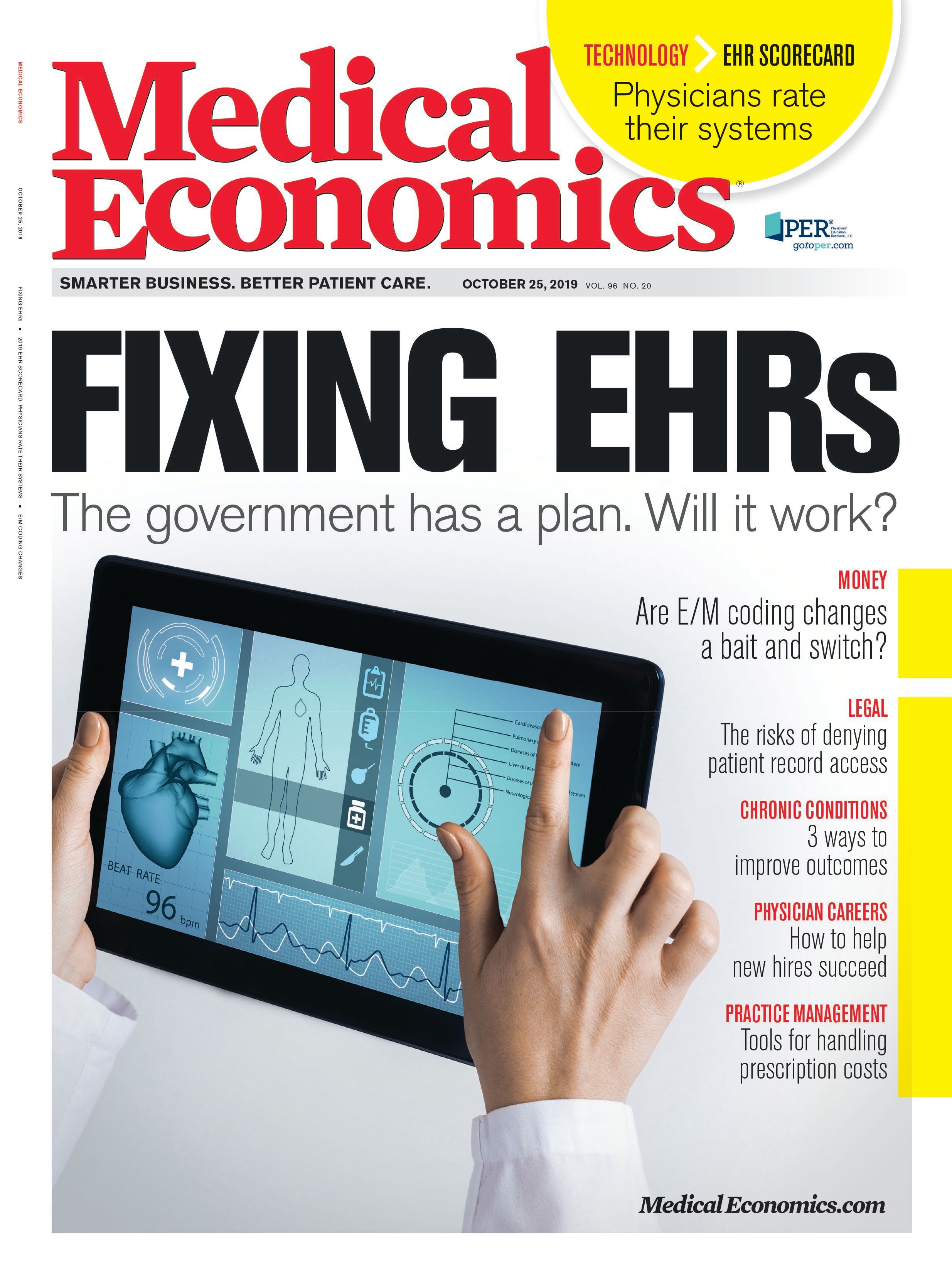Publication
Article
Medical Economics Journal
E/M coding changes
Author(s):
Is it ‘patients over paperwork’ or a bait and switch?

A “bold proposal” to reduce the documentation burden on physicians was released as part of CMS’s 2019 proposed Medicare Physician Fee Schedule (PFS). This seemed to have begun as an effort to listen to stakeholders and address the problems of out-of-date guidelines, cloning, EHR misuse, and problems that have evolved since the inception of the documentation guidelines.
However, this proposal introduces a wholly self-serving and uninvited component of a change to payment rates and methodology that no one asked for.
Payment changes?
The catchy tagline of “Patients over Paperwork” implies a quality issue caused in part by administrative overkill, but let’s not forget that these are the federal guidelines that have been enthusiastically enforced for more than 20 years by this same CMS.
Last year, when CMS sought input from stakeholders about the need to reduce the documentation burden caused by “administratively burdensome and outdated” guidelines-their own words-the decision was hailed within the industry.
CMS had said, “We are … specifically seeking comment on whether it would be appropriate to remove our documentation requirements for the history and physical exam for all E/M visits at all levels.” The agency went on to say that, “We believe medical decision-making and time are the more significant factors in distinguishing visit levels and that the need for extended histories and exams is being replaced by population-based screening and intervention, at least for some specialties.”
No argument there. Physicians have been looking forward to the results of the comment period and hoping for some regulatory relief.
CMS didn’t say, “While we’re at it, let’s change the way providers are paid. Let’s find a way to pay providers less, particularly for the most complex patients.” But that’s exactly what they’ve done with this new proposal.
In July, CMS administrators and physician leadership from the offices of Health Information Technology and Center for Medicare and Medicaid Innovation (CMMI) gathered for a telecast promoting “Patients over Paperwork,” or their E/M coding reform.
Touting their heartfelt desire to reduce documentation burdens and save individual physicians 51 hours a year in documentation time (roughly an hour a week), these former practicing physicians went on to give some real examples of how the current documentation guidelines don’t work well in the EHR environment.
It’s true that it’s difficult to find the real information in an over-templated note, and this could be a danger to patients. It’s a little less true that docs can’t write real notes. Docs don’t-or won’t is more like it-but some EHRs don’t make it easy, either.
The documentation burden
The first part of the proposal is directed at the real issue: the documentation burden.
The proposal states, “We propose to apply a minimum documentation standard where, for the purposes of PFS payment for an office/outpatient E/M visit, practitioners would only need to meet documentation requirements currently associated with a level 2 visit for history, exam and/or medical decision-making (except when using time to document the service).”
The proposed rule doesn’t specify what level 2, new or established, but let’s assume established since most visits are established. That’s a surprising choice since the documentation burden is so low-no reviews of system (ROS), one exam element, and subacute decision-making.
A 99213 is the most widely reported E/M code and is generally recognized to represent one unit of provider work, an acute uncomplicated problem, or a stable chronic illness. It is somewhat surprising to see, then, that the documentation level wasn’t set there, since it is still very easy to achieve without “note bloat.” But perhaps that is intended as more of the bait, because here comes the switch.
CMS writes: ‘‘We believe our proposed documentation changes for E/M visits are intrinsically related to our proposal to alter PFS payment for E/M visits. … We are proposing to create a single rate under the PFS that would be paid for services billed using the current CPT codes for level 2 through 5 E/M visits. It would not be material to Medicare’s payment decision which CPT code (of levels 2 through 5) is reported on the claim.”
Now that we have reduced the documentation burden for all E/M levels within a code category to a level well below what most codes report and require, it doesn’t matter what code you pick. CMS will pay you the same amount.
Somehow, documentation reduction has now introduced payment consolidation and in many, if not most cases, payment reduction for some providers. This is not an unintended consequence. This is calculated and deliberate.
Unintended consequences
The rest of the proposal dealing with E/M goes on to say that you can use a time basis to select your code, MDM, or even the old 1995 and 1997 guidelines as the basis for your code selection. The point is, it no longer matters what codes you choose because you get paid the same.
CMS will likely find that physicians lose interest pretty quickly in coding and documentation once it is uncoupled from payment. What they had been complaining about, justifiably, was the time it took to document, not to code.
Were this proposal to be passed as is, it could result in some real unintended consequences. The first provider to comment on this to me said, “Fine, if you make all the visit and payments the same, I’ll just fire all my complex patients.” There’s a consequence. It’s probably not the majority view, but it’s one that CMS should have considered.
Perhaps CMS should just do what it said it set out to do: reduce the documentation burden that they created. Make it a little easier to use the EHR that they mandated, and don’t disguise a budget initiative as a regulation reduction. The sound bite of “Patients over Paperwork” doesn’t disguise the money grab.
Bill Dacey, MBA, CPC is principal in The Dacey Group, Inc., a consulting firm dedicated to coding, billing, documentation, and compliance for physicians.
Newsletter
Stay informed and empowered with Medical Economics enewsletter, delivering expert insights, financial strategies, practice management tips and technology trends — tailored for today’s physicians.






